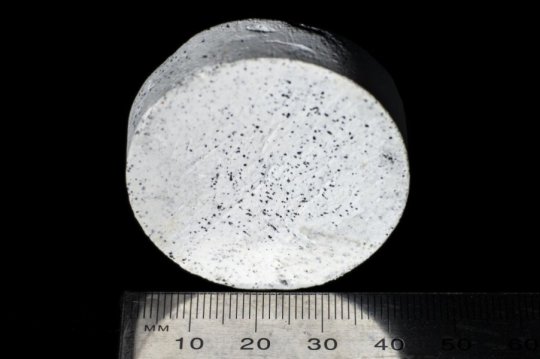[ad_1]
A University of Melbourne researcher has led the successful development of an organic, non-combustible and lightweight cladding core — a product that was previously thought to be impossible to create.
Typically, lightweight cladding is made from organic, carbon-based, composite materials like plastic, but these materials by their nature are combustible. Non-combustible materials like steel, ceramic tiles or concrete are much heavier and more expensive to produce and install.
University of Melbourne Fire Engineering Group research leader Kate Nguyen has discovered that the plastic insulation around electrical cables uses tiny ceramic particles that activate and chemically interact with each other, forming and spreading a heat resistant network through the material.
In partnership with construction materials company Envirosip, who commissioned the research, Dr Nguyen began experimenting with different ceramic particles at the University’s testing furnace at Creswick, north west of Melbourne.
After several false starts, Dr Nguyen provided expert guidance in formulating a material that could withstand heat of 750 degrees Celsius.
“When it passed our first test I was excited, but even after the fifth time I still couldn’t quite believe it,” Dr Nguyen said.
The development comes in the wake of the 2017 Grenfell Tower blaze in London that cost the lives of 72 people and as the building industry globally works to create a lightweight cladding material that does not catch fire.
The material itself is lightweight and feels like a compressed powder. A pale grey colour, the tiny ceramic particles appear as dark specks. At high temperatures these particles blend with the rest of the material, turning it a dark grey colour and rendering it non-combustible.
The material has been tested by an independent testing facility approved by the National Association of Testing Authorities and has achieved Australian and International Standards on combustibility of construction materials.
Envirosip and the University will now work to commericalise the development, which has been carried out as part of the Australian Research Council’s Centre for Advanced Manufacturing of Prefabricated Housing.
“When you are doing research, not all ideas will be successful. To go from success to commercialisation is another big step, but we believe we have developed something special that will be significant for the industry,” Dr Nguyen said.
This research was presented at the 2nd Edition Fire Safety and Cladding Summit in Sydney on Tuesday, 20 November.
Story Source:
Materials provided by University of Melbourne. Note: Content may be edited for style and length.
[ad_2]















